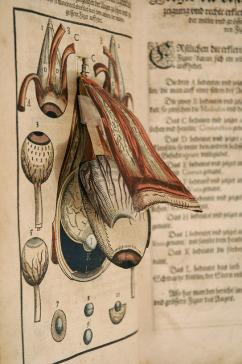My project investigates the ways in which the eye was studied, eye diseases were treated, and the knowledge of the eye was transmitted during the sixteenth and seventeenth centuries in Europe, in particular in the German-speaking lands. From the late sixteenth century onward in northern Europe, an increasing number of people from diverse social classes and professions engaged in studying the eye and its ailments, including surgeons, artisans, natural philosophers, and princely rulers. The body of knowledge on vision that they formed was both theoretical and practical, and they communicated it through a wide range of media, including texts, images, and objects. The circulation of books, printed illustrations, anatomical models, and scientific instruments of vision facilitated the transmission of the knowledge across Europe. The knowledge of the eye not only formed a critical branch of medical and technological investigation, but was also of wider cultural and epistemological significance.

Flaps representing the anatomy of the eye in Georg Bartisch’s Ophthamoduleia (1583). Source: David M. Rubenstein Rare Book and Manuscript Library, Duke University.
Project
(2019-2021)
Dissecting Sight: Surgery and Vision in Early Modern Europe
- Wenrui Zhao
